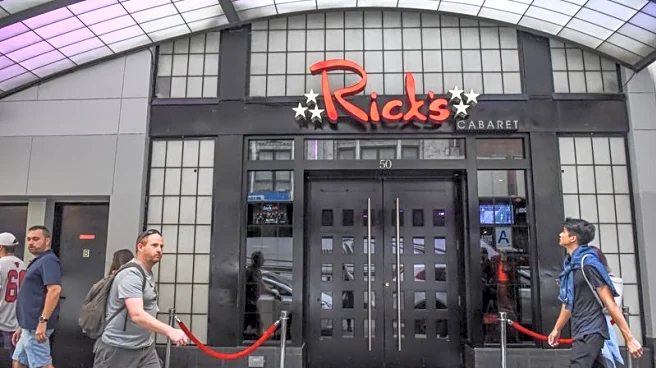What's Happening?
A recent study has found that New York City rats are highly social creatures, traveling in packs and communicating with a distinctive accent. Conducted by researchers at the Basis Research Institute of New York, the study observed rat colonies in various locations across Manhattan, using thermal cameras and ultrasonic microphones. The findings suggest that these rats have developed sophisticated social behaviors and communication methods, including alerting each other to food sources. The study also notes genetic distinctions between rats from different parts of the city, indicating adaptation to urban environments.
Why It's Important?
The study provides new insights into the adaptability and intelligence of urban wildlife, particularly in extreme environments like New York City. Understanding rat behavior and communication can inform pest control strategies and urban planning, potentially reducing human-rat conflicts. The research also highlights the parallels between human and animal social structures, offering a unique perspective on how animals adapt to densely populated areas. These findings could influence public perception and management of urban wildlife, emphasizing coexistence and ecological balance.
Beyond the Headlines
The study raises questions about the ethical treatment of urban wildlife and the impact of human activities on animal behavior. It challenges the traditional view of rats as mere pests, suggesting a more nuanced understanding of their role in urban ecosystems. The research could lead to discussions on humane pest control methods and the importance of preserving biodiversity in cities.












